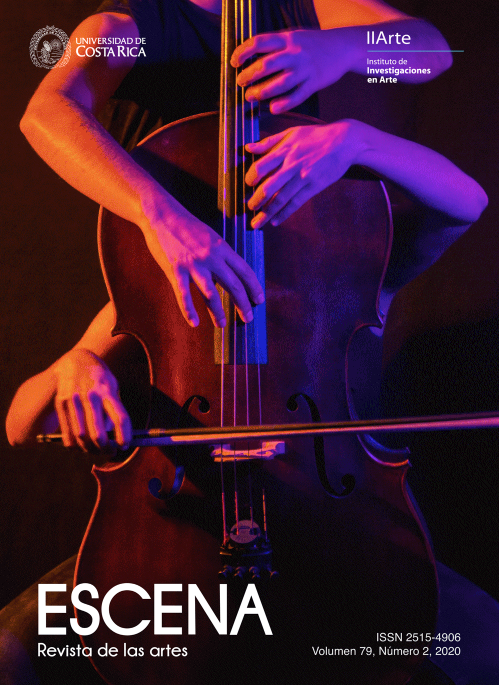Abstract
The transition process from abstract art to neofiguration in the history of Costa Rican painting, which is present in the pictorial works of Manuel de la Cruz González, Rafael “Felo” García and Lola Fernández, was studied through semiotic analysis and the use of the hypothetic-deductive method, while employing all three semiological levels: syntactic, semantic and pragmatic. These methods allowed us to determine both the end of the abstract painting, as well as the beginnings of neofiguration in Costa Rica, which in turn helped us assess the impact of this change of artistic style in the Costa Rican socio-cultural context. In a first instance, we analyzed the works Blanco interrumpido (1971) by Manuel de la Cruz González, Ola creciente (1967) by “Felo” García and Supervivencia (1971) by Lola Fernández, which represented in Costa Rica geometric abstraction, abstract expressionism and informalism, respectively. Therefore, we could conclude that abstract art was not only disruptive in the national plastic scene, but it also sparked a pictorial revolution, thus generating new forms of artistic work in Costa Rica. On the other hand, the analysis of the semiotic levels in the works Desnudo Rojo (1978) by Manuel de la Cruz González, Tugurios (1970) by “Felo” García and Segunda etapa: cuarta escalera de la serie: Arquetipo (1976) by Lola Fernández, establishes the beginnings of the neofigurative style in the Costa Rican painting. Consequently, this revolutionary take on abstract art is confirmed, as the new figuration represents the artistic change achieved by the breakthrough fostered by abstractionism. Finally, the transition from the abstract to the neofigurative style in the artistic, cultural and social context of Costa Rica was made evident by contrasting the works of both styles in the artists, as well as comparing the works of the aforementioned artists. The rupture of abstractionism and the evidence found of a Costa Rican neofiguration movement, with all its particularities, served as a confirmation of the existence of neo-figuration in the country, as well as the plastic revolution that this movement created, which opened new artistic possibilities for the Costa Rican painting scene.


